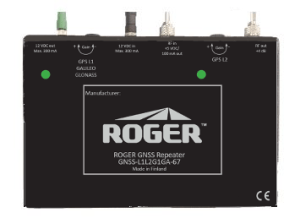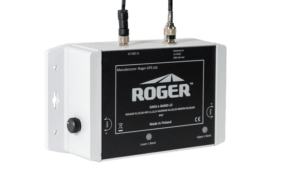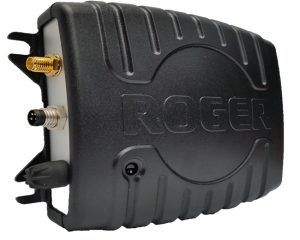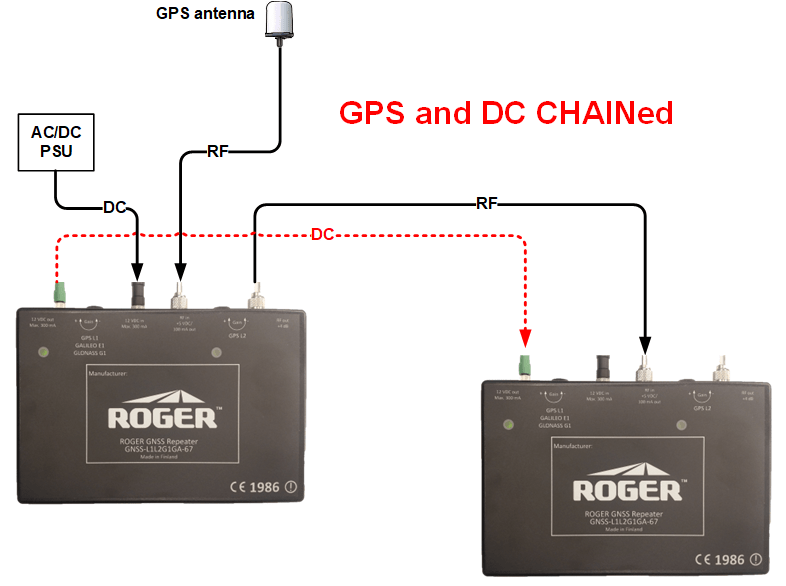Product update – GNSS/GPS Repeaters (15 Jan 2025)
This is #2 in a series of product updates from FalTech GPS, illustrating the range of GNSS/GPS repeaters we offer.
Repeaters can be supplied on their own, but they are usually included as part of a repeater kit with outdoor antenna and coaxial cable.
Repeater for GPS L1, GLONASS, Galileo, BeiDou
The most widely used repeater is the GNSS-L1G1GA from Roger-GPS, that supports GPS L1, GLONASS, Galileo and BeiDou signals.
A Calian (Tallysman) TW3742 outdoor antenna that supports the whole range of upper L-band signals is supplied with the repeater.
If only GPS L1 signals are required, the repeater is supplied with a TW3042 which is a single-band L1 antenna.
Here’s an explanation of GNSS/GPS signal allocation in the upper and lower L-bands.
It is designed for indoor use in dry environments, rated at IP40.
There is also an IP67 waterproof version for use in damp environments.
It is more robust than the standard version, and some prefer this option for use in more industrial locations.
GPS L2 support

GPS L2 signal may be required for high-precision receivers in aviation or surveying companies, or for any situation where signal is specifically required for the operation or testing of L2 devices.
It covers all the upper L-Band spectrum, approximately 1559 to 1610 MHz, as well as the L2 part of the lower L-Band (1215 to 1239 MHz).
“CHAIN” repeaters
Usually there is one antenna, one coaxial cable and one repeater unit in a system.
To provide signal in multiple areas inside a building, we can install repeaters that share a single outdoor antenna in a custom-designed system.
The largest network that I know of is this one in Finland – there’s 32 repeaters in total!
A common way to connect repeaters together is in a “hub and spoke” arrangement (or a star topology if you prefer) using amplifiers and splitters.
There are two repeaters in the range that can be CHAINED together – effectively in series – in such a way that RF and DC power cabling is simplified.
The CHAIN repeaters have two RF connectors – RF IN and RF OUT.
As long as we take into account the effects of attenuation on signal levels, we can CHAIN several repeaters together.
The CHAIN functionality is also available for the DC power supply, as the repeater also has DC IN and DC OUT connectors.
More information on CHAIN repeaters is here.
Last – but definitely not least – GNSS-L-BAND-12
Available mid-February 2025, this repeater covers the whole of the L-Band signal spectrum.

This is useful when some of the newer GNSS/GPS services are required, such as GPS L5 and Galileo E5/6.
Previous iterations of Roger-GPS repeaters cover all the upper L-Band and the GPS L2 section of the lower L-Band.
This new version covers everything from 1164 to 1610 MHz and will be supplied as part of a repeater kit, same as all the other repeaters.
Follow the link for more information on the GNSS-L-BAND-12 repeater.
Please send a message if you require more information on any of the systems illustrated here.


